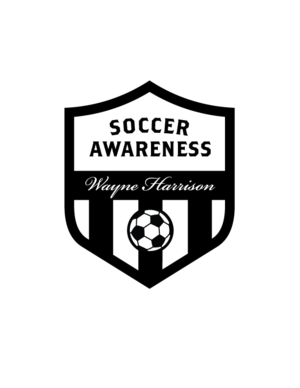A Rondo Overloading Players in the Zone 14 - Training Center Exclusive
/A Game Situational Soccer Awareness Rondo
A rondo can be applied on certain parts of the field of play that apply to the game.
This exercise is based on the positioning of the players around Zone 14 (the zone in front of the opponents back 3 or 4 and their midfield).
Here we start the exercise off as a typical rondo and develop the idea to take it into the game situation.
This example can be the shape within a 4-2-3-1 system of play.
I have used this same set up many times in training to bring the ideas out in actual games with my U14 team. It works; we ended up ranked 5th in the USA developing these as well as many other moves.
Certain moves become almost automatic as each player mentally knows what the other will do; before they do it.
And that is in a 1-3-3-1-3 system of play also (which is the attacking team shape of the 1-4-2-3-1 anyway).
Especially good when teams defend deep against you and you have to open them up with imaginative movements OFF the ball. I love this session.
An Attacking Team Shape Rondo
2 v 2. (8) and (10) keep the ball away from (6) and (8). They can use outside players as support and play two touches for speed of play. Defenders try to keep the ball if they win it
An attacking Team shape drill with interchanges
Players move in and out on the attacking team to confuse opponents. This is so much more than a typical possession game with players on the outside as each player moves based on the 4-2-3-1
Add wing backs and add a defender
A very attacking way to play now with wing backs included so more options of movement and interchange OFF the ball to further confuse opponents.
An attacking Team shape drill with interchanges
Add Wing backs (2) and (3). Introduce another defender to increase the pressure. Make it a 2 v 3 against in the middle. Players can rotate on the blind side of the ball
Make it a 4 v 2 against on the inside
As we get good at this increase the difficulty inside of Zone 14. Now its a 4 v 2 against so (8) and (10) have to work harder to find open passing lanes to play in and we need to ensure teammates interchange with them to increase the difficulty for the defenders also.
Phase of Play: Movements in the Attacking Third
The set up as a Start Position. We are looking at rotation between the players in a positional sense. Shadow play to begin. Coach can determine certain moves to begin then players invent them for themselves
Phase of Play: Movements in the Attacking Third in a 4-2-3-1
After movement. If defenders are marking them and tracking their runs then this can cause great confusion. Here we have a 4 player rotation.
A Four Player Rotation
After movement. If defenders are marking them and tracking their runs then this can cause great confusion. Here we have a 4 player rotation.
Wing backs in
Introduce Wing Backs and now we have 6 or 7 players attacking and moving around changing positions to attempt to confuse the opposition.
Phase of Play: Movements in the Attacking Third
Show each rotation in 2’s, 3 and 11, 2 and 7, 9 and 10 and so on. A lot of interchanging positions that will set a big challenge to the defenders rather than; as often happens; players run up and down in straight lines which is easy to defend against..
Phase of Play: Movements in the Attacking Third
End Product of all the movements. A lot of interchanging positions that will set a big challenge to the defenders rather than as often happens players run up and down in straight lines which is easy to defend against.
Defenders in to make an 8 v 7 Phase of Play
Introduce OPPONENTS and show how your players movements OFF the ball will affect them.
Positioning in what I call “NO MANS LAND”
You want defenders to have to “second” guess who will mark (2) and (11) as they cut inside so they position BETWEEN (A) and (B) and (C) and (D). Defenders (A) and (D) have a choice track inside or stay wide? To reiterate we want (2) and (11) to position in the spaces between the fullbacks and center backs. Creating 2 v 1’s.
Phase of Play: Example of a Play
(9) Short; defender (C) tight, space behind for (2) to run in to the receive the pass and be in on goal. Defenders (A) and (D) have a choice track inside or stay wide? We want (2) and (11) to position in the space between the fullbacks and center backs. Creating 2 v 1’s.
























